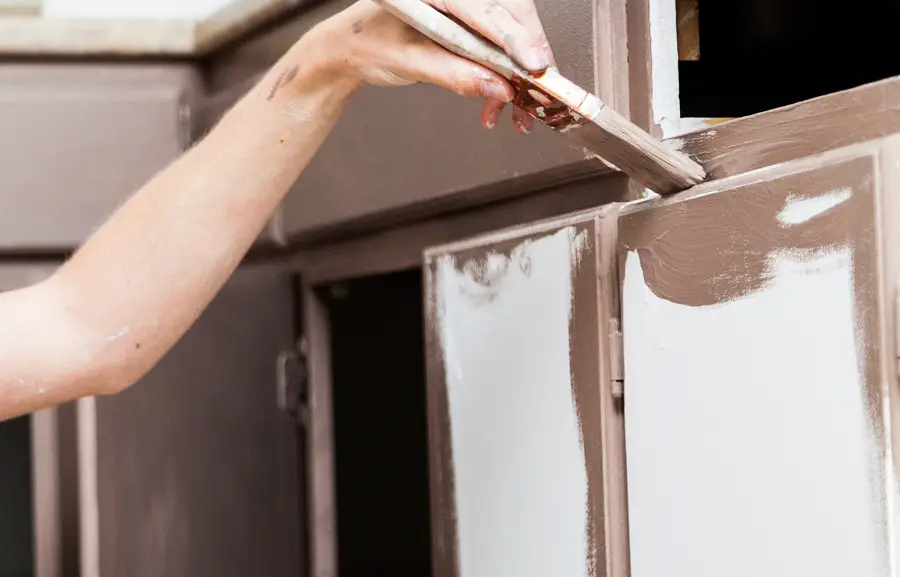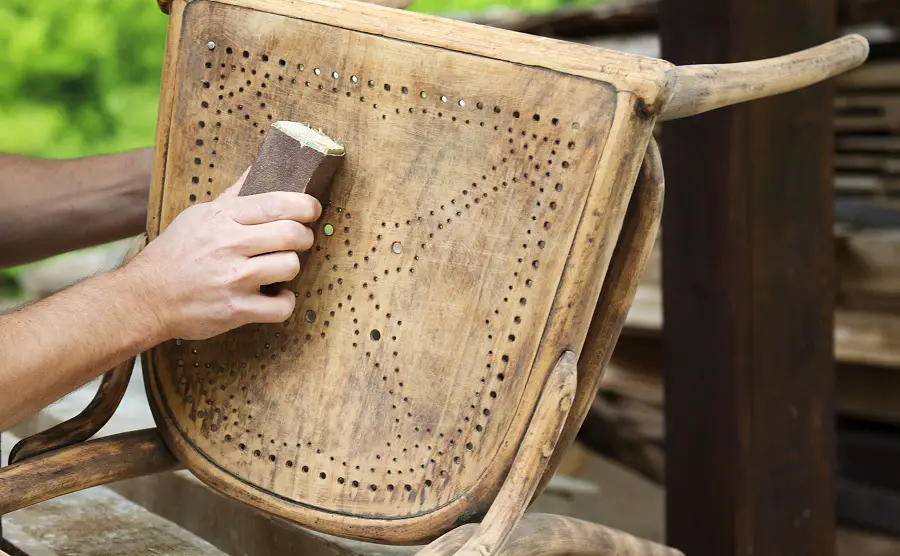Important
And the wooden doors because, in fact, that's where the idea for the article came from. Someone contacted me to tell me that he had repainted the doors with water-based varnish. Before applying the varnish he sanded the entire surface and yet at the slightest knock, the varnish peels off and skins off the door like leather. I was wondering where he went wrong and how he could fix it in this situation. I felt sorry for the work, but the answer was that nothing could be done. The waterborne varnish coat needed to be removed completely and the process restarted. Why? Because in the repainting process steps had been omitted that led to the undesirable result. Find out what they are below.

Degrease the furniture or objects you want to repaint
Any object to be repainted or varnished without removing the existing finish must be degreased. Over time, greasy substances and dust have been deposited, forming a thin film that prevents adhesion. There must be no furniture or kitchen doors to have greasy substances on top. Hand touching, the cleaning and care substances used coat the varnish or paint and make the next coat not adhere. The doors in question have not undergone such a degreasing process.
Another reason for degreasing is the use of maintenance products containing waxes. Pronto is just one example. Ceara makes furniture, doors, wooden objects in general, have a pleasant appearance and a silky sheen, while protecting them from scratches or light knocks. But wax is the final layer and can only be coated with wax. Paints, varnishes have no adhesion to waxed surfaces, so this thin film must be removed if you want to repaint.
How do we remove grease, wax or dirt? Simply by washing the items with water and dishwashing detergent. Don't worry, they won't get hurt. If you do it properly the veneer will not come off, chipboard or MDF will not swell, furniture will not fall apart. Washing should be done with a washcloth or sponge soaked in a solution of water and dishwashing detergent and then wrung out so that the water does not splash on the furniture or doors. Rub the surface well, backing until the layer of dirt gives way. As the dirt loosens, wipe it off with a soft cotton cloth (use old cotton T-shirts, they make the best cloths). Finally rinse with clean water, still using well wrung cloths or sponges. After washing and rinsing, allow the surfaces to soak for 24 hours before applying the new finish.

Sand to increase grip
When a new finish is applied over the old one, we have to be sure that it stays there. First we have to make sure the compatibility of those varnishes or paints. For example, polyurethane paints should not be applied over nitrocellulose paints. Find here explanation. If the two materials don't get along with each other we can end up with the lake above cracked or blooming. The compatibility check is done in a place hidden from view, where a small area of the new finish is applied. If, after drying, everything looks normal the varnishes are compatible.
Another aspect, which may not be noticed when doing the compatibility test, is the lack of adhesion between the old and new coatings. They are products that interact in the contact area and then the adhesion is very good. For example, applying a nitrocellulose paint over another nitro paint, the thinner in the new coat softens the old coat and the two adhere very well to each other. Oil-based paint coats also interact with each other, with the oil penetrating the old coat. Other materials can be applied on top of each other without seeing an immediate effect, but they work as separate entities. They are like layers of fabric laid on top of each other without being sewn together. They stay like that, together, until an outside force intervenes on them. This is the case with hardening varnishes, with hard, tough surfaces that cannot be attacked by thinners to bind together. In this case, before applying another coat of paint, the old surface must be sanded. Sanding produces small ripples (scratches) that increase the adhesion of the surface.
Water-based paints and varnishes are a great option for repainting because, in addition to not having a disturbing smell, they are compatible with most types of paints and varnishes. With them, however, great care must be taken with adhesion. Water-based products are based on molecules that bind together very well after drying. If the conditions for good adhesion have not been created (washing and sanding), the slightest mechanical shock (knocking, scratching) will cause the new layer to peel off and air will get underneath. If we are talking about varnishes, it will whiten instead of bump or scratch. How no adhesion and the varnish molecules are tightly held together, the film will not "break" in one place, as with other varnishes, but peels off the entire surface like sunburnt skin.
Sanding is done with a fine abrasive sponge or 280 or 320 grit sandpaper. If it follows apply varnish or gloss paint, use 400 grit sandpaper. Sand the entire surface lightlyThe aim is to create the rhizomes and bonding conditions, not to remove the existing layer. After sanding, the surface is roughened with a clean cloth (without thinners or other substances). Do not leave more than 24 hours before recoating. If more time passes you will have to sand again.

Do not apply thick layers
If you want a good, long-lasting result, don't apply thick coats. Better several and thinner than one and thick. Thick coats create tension when drying and cracks can occur. And a thick coat of varnish or water-based paint peels off much more easily than a film of 2-3 thin coats.
If possible, use a stiff sponge trowel for application. Applied in this way, the coats will be thin and even.
I hope the above tips will help you. If you have any questions, you can leave them in the space below. I will certainly answer them.


























Add comment